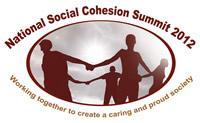Posted on June 14, 2012

The U.S. prides itself of being a nation of immigrants. A steady flow of immigrants has been arriving on American shores since the 1700s. The flow peaked between 1880 and 1924. Ellis Island was the country's busiest immigration inspection station between 1892 and 1954. It was the first Federal immigration station following the Federal government's assuming of control of immigration in 1890. A third of the country's population today - approximately 100 million people - traces its history via ancestors who arrived through the island. Those who arrived came from countries such as Poland, Ireland, Lithuania, Italy, China, Barbados, Japan, England and Sweden. The first immigrant to pass through the station was a 15-year-old Irish girl by the name of Annie Moore on January 1, 1892. However, the wooden building housing the immigration station was destroyed by a fire in 1897 and along with it immigration records dating back to 1855. New fireproof buildings were subsequently constructed.
Immigrants arriving on the island had to show that they had enough money to settle and get themselves started - between $18 and $25 - and that they had secured passage to their final destination. They were inspected for any visible signs of ill health. Anyone who was not well would be placed in the hospital on the island. In some of the exhibitions you see ragged-looking people clutching all their worldly possessions, waiting in line to be inspected. Many of the people who passed through island who were interviewed in various oral history projects speak of the terror that gripped immigrants as they disembarked from their ships. If a person was denied entry into the country, they would be deported to their port of origin. That would be the end of the dream of a new and better life for anybody who crossed the seas seeking opportunity. Only 2% of those who sought entry were turned away though.
Once you get past the condensed version on the ground floor and explore the sprawl on the other three floors, you encounter remarkably-told stories of the experiences of people who immigrated. You learn about the things that compelled people to leave their places of origin - religious persecution, famines, and downright adventure in some cases; through how they settled in the new country - some became successful business owners, some found work, while others ended up homeless and destitute. As you move from room to room, among others you see exhibitions on industry, labour, children's experiences, political participation, detention, aid societies, and medical care. It takes at least half a day to browse the exhibitions.
When the immigration station closed, the island was abandoned. It became a ruin until a project to restore it was begun in 1966. It took until 1982 for construction to begin and it lasted until 1990 when the museum opened to the public. Now genealogists and anybody who wants to trace ancestors that immigrated through Ellis Island can hop on the boat at New York Harbour and go across to Ellis Island or simply go online to search for names.
The American Family Immigration History Center was set up in collaboration with the Church of Christ of Latter-Day Saints. On the Center's search, when you find the name of a person you are searching for, you typically find three pieces of information matched to the name: the ship's manifest, a typed version of the person's details extracted from the ship's manifest, and an image of the ship on which the person travelled. The passenger record is sparse on detail, but it has some useful information: first name, last name, ethnicity (which usually means nationality), last place of residence, date of arrival, age of arrival, gender, ship of travel, port of departure, and manifest line number. The details of the ship offer clues that can be helpful as well, such as who owned the ship, when and where it was built and by what company, what colours it flew, and any known change of ownership of the ship.
I cast around for some potential South African surnames to look for, not expecting that all that many South Africans landed on Ellis Island during its years of operation. The search options are rather limited: first name, last name, approximate year of birth, and gender. I was alerted before beginning my search that the ethnicity of South Africans often shows up as British and that most would have sailed from ports in England. Unlikely as it was to have been a South African of that surname who landed on the island, Zulu was the only surname I could come up with.
There were several names with Zulu in them, such as several people who came from Colombia called Zuluaga and one from Cuba named Zuluaza. The only Zulu was a Rudolf Zulu from Austria. The people who are most likely to have been South African were two 14 year olds, James and John Zulue. James arrived on May 3, 1924 on the ship Aquitania, which had sailed from Southampton in England. The person(s) named John appear(s) as arriving 10 times from Southampton on the Aquitania, the first time being on April 11, 1924 and the last being on December 31 of the same year.
Having paid $5 and now able to conduct searches and save them, I am now trying to think up other names to look up. The extent to which immigration is embraced and how records of it are kept in the United States is something to admire.
See: http://www.ellisisland.org
Mbongiseni Buthelezi is the Archival Platform’s Ancestral Stories Coordinator